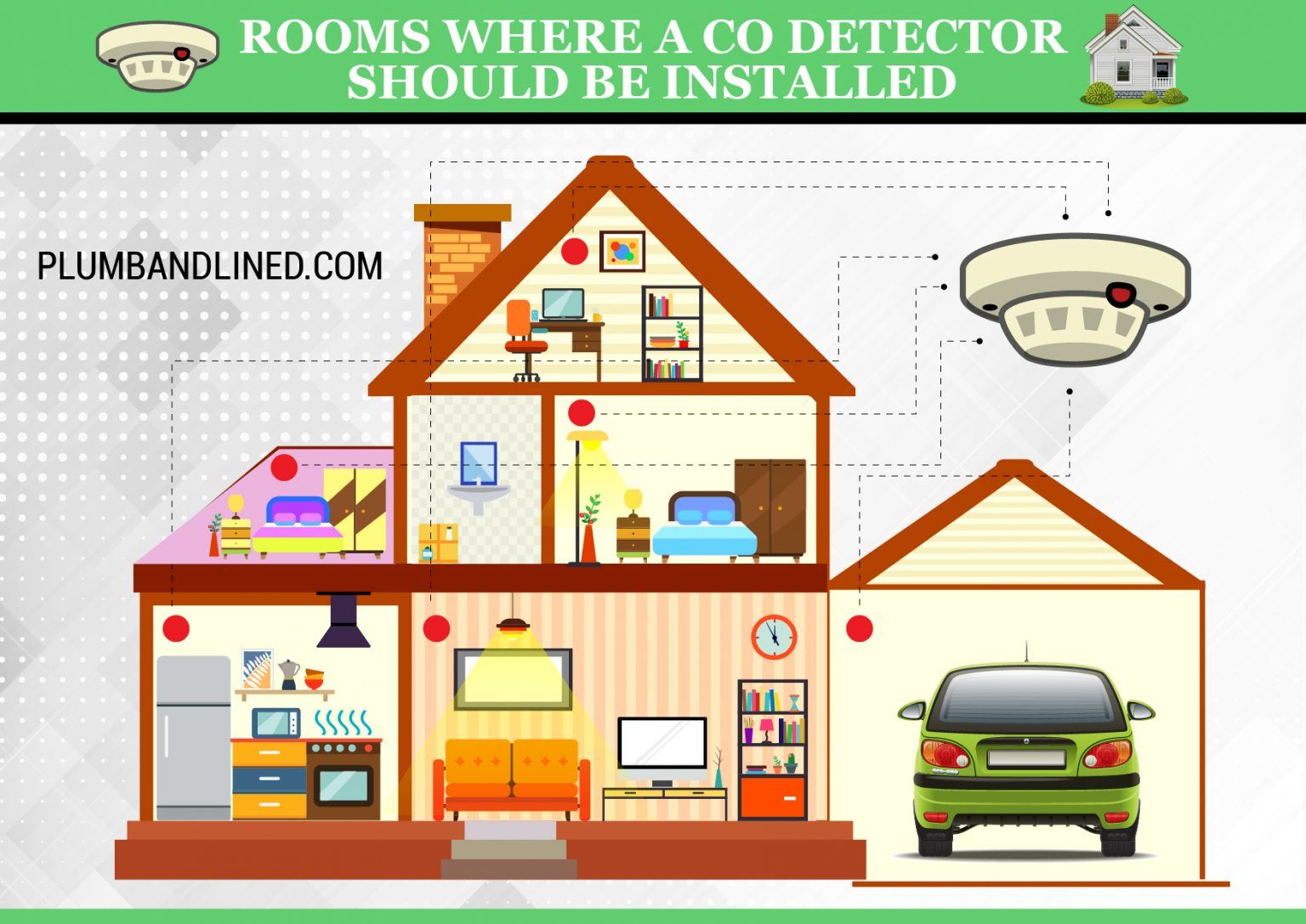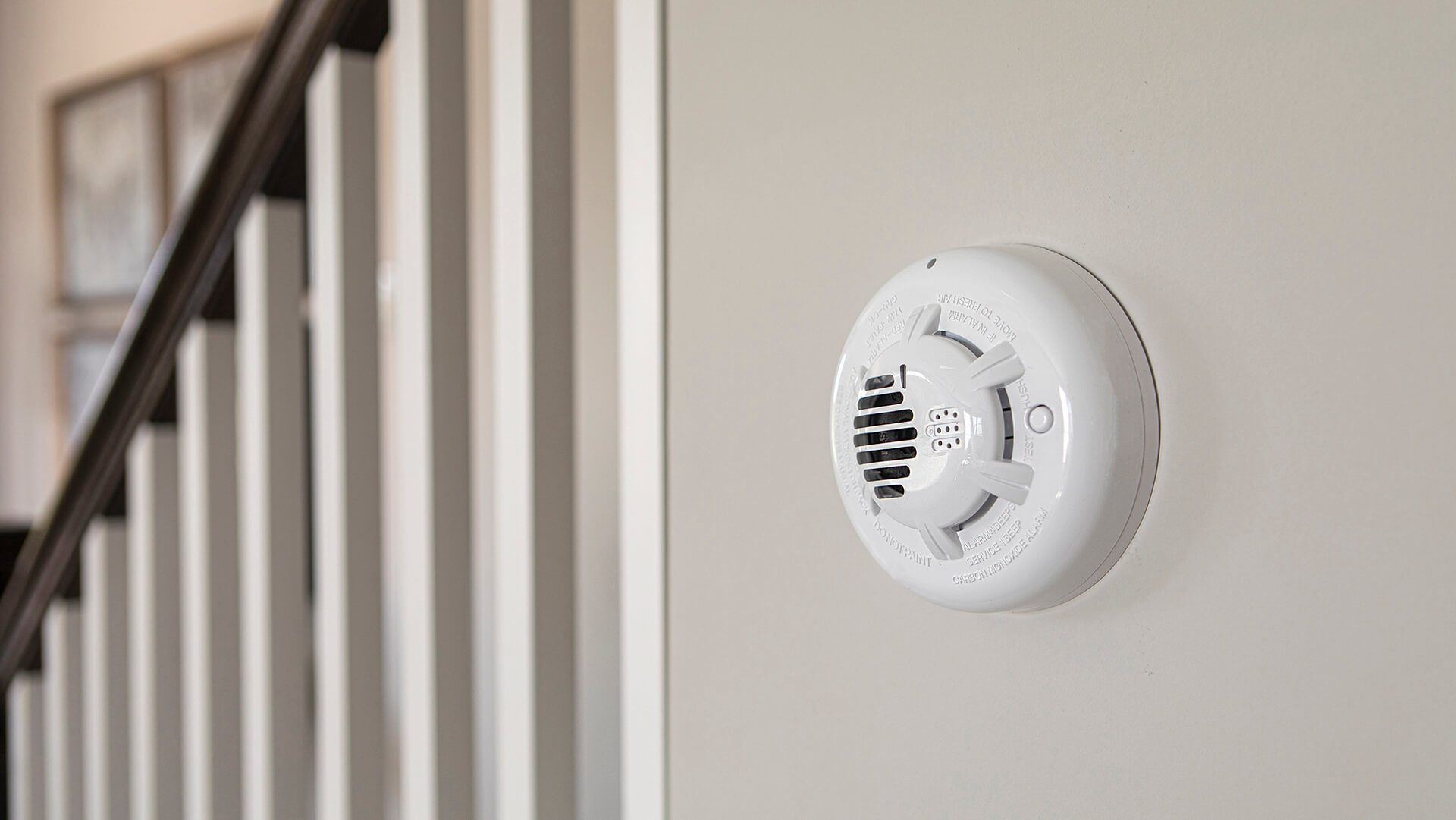Where Should A Co2 Detector Be Installed

Carbon monoxide (CO) is a colorless, odorless, and tasteless gas produced by incomplete combustion of fuels like natural gas, propane, heating oil, kerosene, coal, charcoal, gasoline, and wood. Because you can’t see, smell, or taste it, CO is incredibly dangerous and can be fatal. A CO detector is your primary defense against this silent killer, but its effectiveness hinges entirely on proper installation.
Why Proper CO Detector Placement Matters
Incorrect placement can lead to delayed or missed alarms, putting you and your family at risk. CO mixes with air, but its density is very close to that of air. It tends to distribute evenly throughout a room. However, factors like ventilation and proximity to CO sources can influence its concentration. That's why strategic placement is critical.
Understanding Common CO Sources in Your Home
Before we delve into placement, it's vital to understand where CO might originate:
- Furnaces: Malfunctioning or poorly maintained furnaces are a significant source.
- Water Heaters: Especially gas-powered water heaters.
- Fireplaces: Both wood-burning and gas fireplaces can produce CO if not properly vented.
- Generators: Never run a generator indoors or in an attached garage.
- Gas Stoves and Ovens: While less common, they can produce CO if burners are improperly adjusted or if the appliance is malfunctioning.
- Vehicles: Running a car in an attached garage, even with the door open, can quickly lead to dangerous CO levels.
- Portable Heaters: Kerosene or propane heaters are potential CO sources.
The Golden Rules of CO Detector Placement
These are the fundamental principles to follow:
1. Install on Every Level of Your Home
At a minimum, have a CO detector on each level, including the basement. CO can spread throughout the house, and this ensures early detection, regardless of where the gas is originating.
2. Place Near Sleeping Areas
This is crucial. Install a detector in the hallway outside bedrooms or, ideally, inside each bedroom. You and your family are most vulnerable when sleeping. Early warning can save lives.
3. Follow Manufacturer's Instructions
This seems obvious, but it's often overlooked. Always read and adhere to the manufacturer's instructions that came with your specific CO detector. These instructions may contain model-specific recommendations.
4. Consider the "Central Location"
In addition to near sleeping areas, placing a detector in a central location on each level ensures broader coverage. This could be a hallway, living room, or kitchen (if the kitchen doesn't house combustion appliances).
Specific Placement Guidelines: Height and Proximity
Wall Mounting vs. Ceiling Mounting
- Wall Mounting: If wall mounting, place the detector 5-6 feet (approximately at eye level) from the floor. This height is generally recommended for optimal detection because CO will mix evenly throughout the room.
- Ceiling Mounting: If ceiling mounting, place the detector at least 4 inches from any wall. This is to avoid the "dead air" space that can sometimes exist in corners.
Distance from Fuel-Burning Appliances
Important: Don't place a CO detector directly next to or above a fuel-burning appliance (furnace, water heater, stove, etc.). Excessive heat or fumes could cause false alarms or damage the detector. Maintain a distance of at least 10 feet.
Avoid Obstructed Areas
Don't place a CO detector behind furniture, curtains, or in enclosed spaces like closets. These obstructions can hinder the detector's ability to sense CO.
Avoid Damp or Humid Areas
Bathrooms and laundry rooms can have high humidity levels that can damage the detector's sensor. Also, avoid placing detectors near sinks or dishwashers where they could be splashed with water.
Avoid Dusty or Dirty Areas
Garages and workshops can be dusty environments. Dust and debris can clog the detector's sensor, reducing its effectiveness and potentially triggering false alarms. Consider using a detector specifically designed for these environments, or clean the detector regularly according to the manufacturer's instructions.
Troubleshooting Common CO Detector Issues
Even with proper placement, CO detectors can sometimes malfunction. Here's a basic troubleshooting guide:
1. False Alarms
A false alarm can be unsettling. Before assuming a CO leak, consider these possibilities:
- Low Battery: This is the most common cause. Replace the batteries immediately. Some detectors continue to alarm briefly even after battery replacement; this is normal self-testing.
- End of Life: CO detectors have a limited lifespan (typically 5-10 years). Check the manufacturing date on the detector and replace it if it's expired. Most detectors will chirp when they are at the end of their useful life.
- Dust and Debris: Clean the detector with a vacuum cleaner attachment to remove dust.
- Humidity: High humidity can trigger false alarms. Try moving the detector to a drier location.
- Chemical Interference: Aerosol sprays, cleaning products, and even some perfumes can sometimes trigger false alarms. Avoid spraying these near the detector.
If you've ruled out these causes and the alarm persists, evacuate the premises immediately and call your local fire department or 911. Don't re-enter until they've determined it's safe.
2. Detector Not Working at All
If your detector isn't powering on or responding:
- Check the Batteries: Ensure the batteries are fresh and properly installed. Test them with a battery tester if you have one.
- Check the Power Outlet (for AC-powered detectors): Make sure the outlet is working by plugging in another device. If the outlet isn't working, check the circuit breaker.
- Reset the Detector: Some detectors have a reset button. Press and hold it for the recommended duration (usually a few seconds).
- Check Wiring (for hardwired detectors): If you are comfortable and know how to do it, turn off the breaker for the CO detector, then carefully check the wiring connections to the detector. Make sure the wires are securely attached and that there is no obvious damage. If you are not comfortable working with electrical wiring, contact a qualified electrician.
If none of these steps work, the detector likely needs to be replaced.
3. Chirping Sounds
A single, intermittent chirp is usually a sign of a low battery or the detector reaching the end of its life. Replace the batteries or the entire unit accordingly.
When to Call a Professional
While some CO detector issues are easily resolved, certain situations require professional help:
- Suspected CO Leak: If your CO detector alarms and you suspect a CO leak (headache, dizziness, nausea), evacuate immediately and call your fire department or 911. Do not attempt to find the source of the leak yourself.
- Complex Electrical Issues: If you suspect problems with your home's electrical system are affecting the CO detector, call a qualified electrician.
- Gas Appliance Malfunctions: If you suspect a malfunctioning gas appliance is the source of CO, contact a qualified HVAC technician or gas company.
- Hardwired Detector Problems: Troubleshooting and repairing hardwired CO detectors can be dangerous and should be done by a qualified electrician.
CO Detector Maintenance: Keep It Working
Regular maintenance is key to ensuring your CO detector functions properly:
- Test Regularly: Test your CO detector at least once a month by pressing the test button.
- Replace Batteries: Replace the batteries at least every six months, or according to the manufacturer's recommendations. A good practice is to change them when you change your clocks for daylight saving time.
- Clean Regularly: Gently vacuum the detector's exterior every few months to remove dust and debris.
- Replace Expired Detectors: Replace your CO detector every 5-10 years, or according to the manufacturer's instructions, even if it seems to be working fine.
Choosing the Right CO Detector
CO detectors come in various types:
- Battery-Powered: Easy to install and ideal for homes without readily accessible outlets.
- AC-Powered with Battery Backup: Plug into an outlet for continuous power and have a battery backup in case of power outages.
- Hardwired with Battery Backup: Connected directly to your home's electrical system and have a battery backup. Requires professional installation.
- Smart CO Detectors: Connect to your home's Wi-Fi and can send alerts to your smartphone.
- Combination Smoke and CO Detectors: Detect both smoke and CO, offering comprehensive protection.
Consider your needs and preferences when choosing a CO detector. Look for detectors that are certified by a reputable testing organization like UL (Underwriters Laboratories).
Final Thoughts
Installing and maintaining CO detectors is a vital part of home safety. By following these guidelines, you can ensure your detectors are properly placed and functioning, providing you and your family with the earliest possible warning of a CO leak. Remember, prevention and preparedness are the best defenses against this silent killer.
Disclaimer: This article is for informational purposes only and does not constitute professional advice. If you have any concerns about CO safety or the installation and maintenance of CO detectors, consult with a qualified professional.










